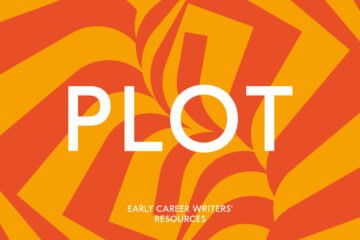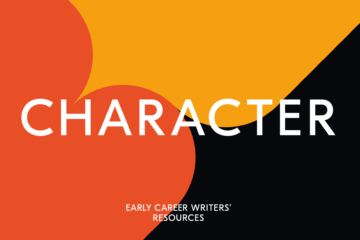I’ve never enjoyed editing. Have avoided it like the plague, in fact. So much so that I fell into a serialised form of writing novels whereby I write and publish a chapter online every week, over on Wattpad. It works for me and keeps me productive, but the Wattpad versions of my books are evidently not going to be as polished as something you’d buy in a bookshop.
In 2016 I finished my first novel, A Day of Faces, and immediately moved on to writing my second. I’d considered ADoF to be complete, in as much as it had always been conceived as an experiment in serialised storytelling. Distance and time are good for creativity, though, and three years later I knew there was more to be done. I was going to edit the damn thing and start turning it into something more polished and more worth of a reader’s attention — and potentially their money.
Independent criticism from an editor
Step one was to get some new analysis of the book in its current form. I’d received over 1000 comments on the story during its online publishing, all of which had been invaluable. Those comments had ranged from simple reactions to in-depth critiques and basic typo-spotting. What I needed was something deeper and more cohesive.
I reached out to a former colleague who had provided editorial consultancy for various authors over the years. A few weeks later I had a line-by-line analysis of A Day of Faces plus a five page report, breaking down the characters, plot and structure.
It was thrilling and invigorating. I’ve always enjoyed the feedback process, perhaps having worked in marketing and copywriting for much of my career, where there is always the drive to improve and become more efficient. Rather than fearing the word of the editor, the notes became new map with which to navigate my manuscript.
Turning notes into actions
The report and line-by-line notes were useful but required translating into practical actions. I had to pick which parts I agreed with and decide how much they would influence the book.
For this I inevitably turned to Trello, probably the best tool for rapidly iterating on protoypes and ideas. This produced a big board full of ideas:

I had many lists on the board, which I’m going to explain as I think the process might be useful to others:
- Locque lore upgrade
- Earth lore upgrade
- Earth-Locque history — each of these first three is about world building, embellishing what was already in the text and expanding upon it. Much of the story’s setting was made up as I went along and needed more detail, as well as better seeding from the beginning.
- Cal’s backstory — Cal is one of the lead characters and was never as real as I wanted him to be. Despite moving the plot around drastically, his character never quite settled. The cards in this list were all about deepening our understanding of him.
- Plot holes — yup, the original Wattpad version of the story has plot holes. Such is the nature of an on-the-fly live first draft — serialisation is exciting for writers and readers but has its downsides. I’m fixing those in the edit.
- Structural — here I noted down the existing narrative structure of the book and how it could be tweaked to provide a more satisfying experience for the reader. Again, I was making this up as I went along previously, and now had the opportunity to revise and refine.
- Society stuff — the core notion of A Day of Faces is that on each day, every 24 hours, every child born is identical. Then the next day it’s a new look. How this impacts on society was only vaguely explored in the Wattpad version and it demands more examination.
- Thematic resonance — the themes of the book only emerged about halfway through, and resonate far more strongly in the second half. The edit is an opportunity to thread those retrospectively back through the rest of the story.
- Character balance — the cast was in flux throughout the book’s writing, with some characters (Hi, Marv) becoming more regular than expected. That makes for some slightly uneven character development. The edit will bring characters in sooner and adjust their weighting in the story.
- Plot repacing — the first half of ADoF shoots along at a ridiculously fast pace. It makes for an exciting read but is also slightly bewildering and decidedly shallow. As such, this may be the only editing job in history where I’ll be adding words. I just need to make sure I don’t make it bloated and lose its original leanness.
Into Scrivener
Once I’d pinned down what I wanted to do, it was time to head back into Scrivener, opening up the project file that I hadn’t touched for several years. Returning to a manuscript after a long time, especially if you’ve been working on other projects during the intervening period, is like poking around in a house you used to live in. It’s familiar but not quite as you remember; it feels often like it was written by somebody else.
That meant I had to refamiliarise myself with the text, which was thankfully made easy by Scrivener’s structural UI. Rather than being faced with a monolithic wall of text, I could immediately see the shape of the book, chapter-by-chapter and arc-by-arc.
Zooming out to that chapter overview level on the corkboard, I started rearranging chapters, adding in placeholders for new chapters and adding labels to demonstrate what needed to happen to each existing chapter.
Here’s what it ended up looking like:

That’s only about a quarter of the book there. Note the colour coding in particular:
- Green for ‘complete’: ie, I’ve finished editing these chapters
- Light blue for ‘new chapter’ — totally new content that needs to be written from scratch
- Dark blue for ‘needs expansion’ — ie, the original text is OK but needs work
- Red for ‘total rewrite’ — which basically means ‘this chapter is trash, start over’
Adding in the light blue ‘new chapters’ as placeholders was especially useful. It enables me to see the new shape of the book before I’ve even written the new material, which is very effective in terms of the restructuring and plot repacing.
It was around this point in the process that I realised the last time I attempted to edit a large piece of work was back when I was using a basic word processor. Pre-Scrivener. The experience of undertaking such a task while equipped with the correct tool is entirely different. Scrivener makes editing exhilarating, fun and as creatively satisfying as the original writing. At the same time it speed up the process, making it more efficient and less frustrating.
I’m working through A Day of Faces 2.0 as fast as I can. I’m not yet sure where it’s going to show up, but it almost certainly won’t be for free (I have no intention of taking down the original Wattpad version, though).
Key takeaway would be: use the right tools for the job. In my case, that means Trello and Scrivener. And seek independent critical feedback — don’t rely on your own judgement or the dreaded friends/family web of lies.



1 Comment
ebeaty · April 6, 2020 at 1:27 am
Just started reading your Wattpad book on writing and saw this website with this blog post. I use and love Scrivener and Trello as well, but I never thought about using Trello for fleshing out a novel like you have. I do that mostly in Scrivener, but, admittedly, it makes a project overwhelmingly convoluted. I’ll definitely try using Trello next time.
Might I recommend another great resource by the fine folks at L&L: Scapple. If you’ve never tried mind-mapping before, it’s a revelation in itself.